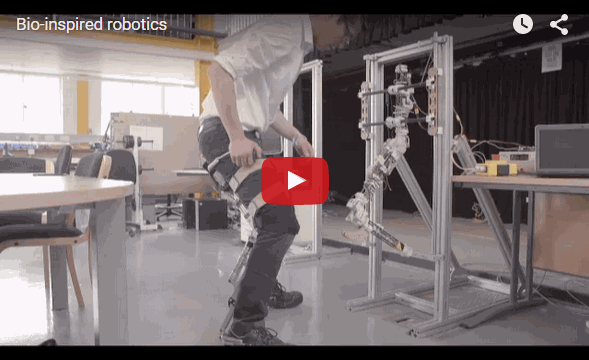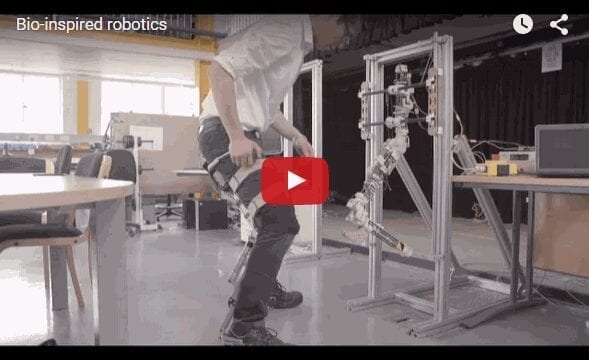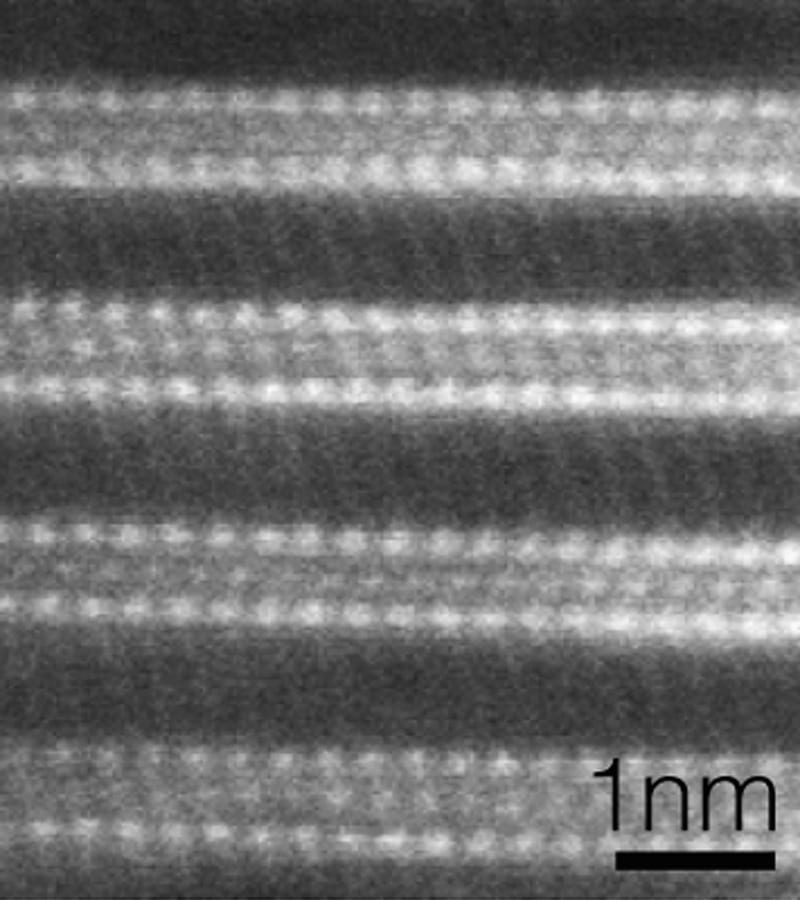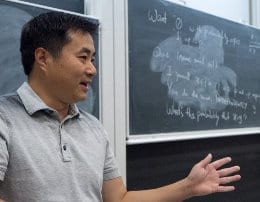
Researchers have observed the process of evolution by natural selection at work in robots, by constructing a ‘mother’ robot that can design, build and test its own ‘children’, and then use the results to improve the performance of the next generation, without relying on computer simulation or human intervention.
We want to see robots that are capable of innovation and creativity
Fumiya Iida
Researchers led by the University of Cambridge have built a mother robot that can independently build its own children and test which one does best; and then use the results to inform the design of the next generation, so that preferential traits are passed down from one generation to the next.
Without any human intervention or computer simulation beyond the initial command to build a robot capable of movement, the mother created children constructed of between one and five plastic cubes with a small motor inside.
In each of five separate experiments, the mother designed, built and tested generations of ten children, using the information gathered from one generation to inform the design of the next. The results, reported in the open access journal PLOS One, found that preferential traits were passed down through generations, so that the ‘fittest’ individuals in the last generation performed a set task twice as quickly as the fittest individuals in the first generation.
“Natural selection is basically reproduction, assessment, reproduction, assessment and so on,” said lead researcher Dr Fumiya Iida of Cambridge’s Department of Engineering, who worked in collaboration with researchers at ETH Zurich. “That’s essentially what this robot is doing – we can actually watch the improvement and diversification of the species.”
For each robot child, there is a unique ‘genome’ made up of a combination of between one and five different genes, which contains all of the information about the child’s shape, construction and motor commands. As in nature, evolution in robots takes place through ‘mutation’, where components of one gene are modified or single genes are added or deleted, and ‘crossover’, where a new genome is formed by merging genes from two individuals.
In order for the mother to determine which children were the fittest, each child was tested on how far it travelled from its starting position in a given amount of time. The most successful individuals in each generation remained unchanged in the next generation in order to preserve their abilities, while mutation and crossover were introduced in the less successful children.
The researchers found that design variations emerged and performance improved over time: the fastest individuals in the last generation moved at an average speed that was more than twice the average speed of the fastest individuals in the first generation. This increase in performance was not only due to the fine-tuning of design parameters, but also because the mother was able to invent new shapes and gait patterns for the children over time, including some designs that a human designer would not have been able to build.
“One of the big questions in biology is how intelligence came about – we’re using robotics to explore this mystery,” said Iida. “We think of robots as performing repetitive tasks, and they’re typically designed for mass production instead of mass customisation, but we want to see robots that are capable of innovation and creativity.”
Read more: On the origin of (robot) species
The Latest on: Robot Innovation and Creativity
[google_news title=”” keyword=”Robot Innovation and Creativity” num_posts=”10″ blurb_length=”0″ show_thumb=”left”]
via Google News
The Latest on: Robot Innovation and Creativity
- OMRON Partners with NEURA Robotics to Unveil New Cognitive Robot and Seamless Integration of Automation Technologies at Automate 2024on April 30, 2024 at 6:00 am
OMRON, leading solution provider in industrial automation, and Neura Robotics GmbH, innovation leader in cognitive robotics, recently announced their strategic partnership aimed at revolutionizing ...
- A real treat for robotics fans!on April 30, 2024 at 4:30 am
For those looking to take their robotic journey to the next level: TCR-Group would like to welcome new members to join their senior robotics team, gearing up for the FTC competition (FIRST Tech ...
- Watch Boston Dynamics’ dog-like robot don a dog suit and danceon April 29, 2024 at 11:15 pm
To mark International Dance Day, Boston Dynamics has shared a video showing its Spot robot dressed as a dog and pulling some moves.The Latest Tech News, Delivered to Your Inbox ...
- Startling vision of advanced new humanoid robot that can cook and cleanon April 29, 2024 at 9:07 pm
A Chinese tech company has released astounding vision of its new human-like robot, powered by artificial intelligence, with plans to release it commercially later this year.
- Balancing Innovation and Employment: Navigating the Impact of Artificial Intelligenceon April 29, 2024 at 5:54 pm
In the rapidly evolving landscape of technology, the advent of Artificial Intelligence (AI) has sparked both awe and apprehension. While hailed for its potential to revolutionize industries and ...
- Innovation by Design Summit explores intersection of technology, creativityon April 27, 2024 at 10:53 pm
The region s first Innovation by Design Summit, held recently, addressed the impact of technology on creativity. Ibtechar Digital ...
- Innovation Meets Creativityon April 27, 2024 at 1:37 pm
Artificial intelligence, robots, glass blowing, virtual reality, and performing arts were just a sampling of what thousands of visitors experienced at the 2024 Imagine RIT: Creativity and Innovation ...
- Empowering Creativity: 10 Innovative Tech Gadgets to Spark Imagination in Kidson April 23, 2024 at 10:44 pm
In a world driven by technology, fostering creativity in children has become more important than ever. Fortunately, with the rise of innovative tech gadgets, parents now have a plethora of tools at ...
- From Concept To Impact: Navigating The Climate Tech Landscape With AI And Roboticson April 19, 2024 at 5:30 am
The fusion of robotics and AI presents a transformative avenue for addressing climate change, providing immediate, scalable solutions beyond traditional methods.
- World's most advanced AI robot has a 'terrifying answer' when asked it if can design itselfon April 18, 2024 at 8:02 am
The world's most advanced humanoid robot "Ameca" was asked this question and her response left everyone stunned.
via Bing News











